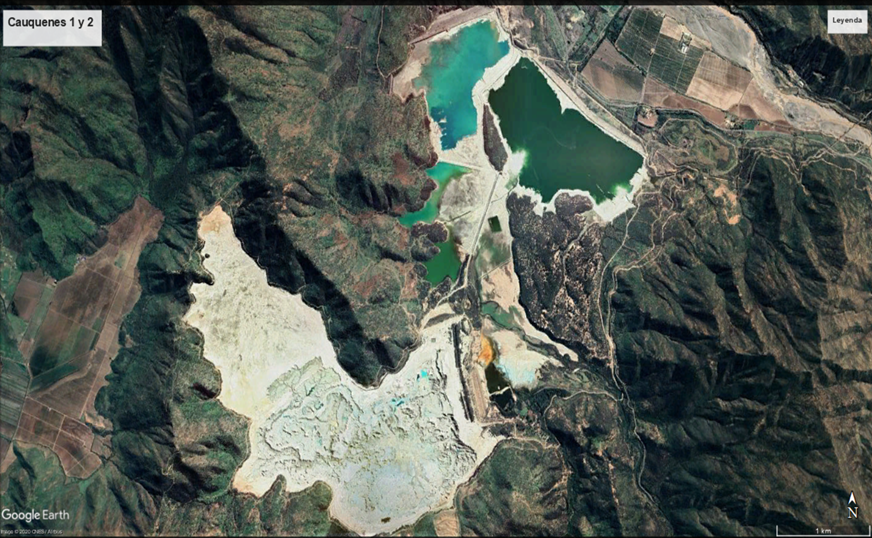Currently browsing: Sin categoría
The hardest part of starting up is starting out
Cauquenes N° 1
Boletines Icold
| Boletín N° | Nombre |
|---|---|
| 189 | ESTADO ACTUAL DE LA PRÁCTICA EN LA TOMA DE DECISIONES INFORMADA SOBRE RIESGOS PARA LA SEGURIDAD DE PRESAS Y DIVISAS |
| 188 | FALLAS DE LA PRESA – ANÁLISIS ESTADÍSTICO |
| 187 | EVALUACIÓN DE INUNDACIONES, DETERMINACIÓN DE PELIGROS Y GESTIÓN DE RIESGOS |
| 186 | FUNCIONAMIENTO ÓPTIMO INTEGRADO DE ESTACIONES HIDROELÉCTRICAS Y DEPÓSITOS EN CASCADA |
| 185 | RETOS Y NECESIDADES DE LAS PRESAS EN EL SIGLO XXI |
| 184 | GESTIÓN DE REACCIONES QUÍMICAS EXPANSIVAS EN PRESAS DE HORMIGÓN Y PROYECTOS HIDROELÉCTRICOS |
| 183 | Selección del tipo de presa |
| 182 | GESTIÓN DE SEDIMENTOS EN DEPÓSITOS: Normativas nacionales y estudios de caso |
| 181 | Diseño de presas de relaves – Actualización tecnológica |
| 180 | Vigilancia de presas: lecciones aprendidas de historias de casos |
| 179 | Núcleos de hormigón asfáltico para presas de terraplén |
| 178 | Operación de Estructuras Hidráulicas de Represas |
| 176 | Obstrucción de aliviaderos y desagüe |
| 175 | Gestión de la seguridad de la presa: fases preoperativas del ciclo de vida de la presa |
| 174 | Plan de acción sobre creación de capacidad |
| 173 | Operación integrada de centrales hidroeléctricas y embalses |
| 172 | Avances técnicos en el diseño de vertederos: avances e innovaciones de 1985 a 2015 |
| 171 | Almacenamiento de agua multipropósito: elementos esenciales y tendencias emergentes |
| 169 | Cambio climático global, presas, embalses y recursos hídricos relacionados |
| 168 | Recomendaciones de operación, mantenimiento y rehabilitación |
| 167 | Revisión del Boletín 062A |
| 166 | Inspección de presas después de un terremoto: directrices |
| 165-2013 | Selection of materials for concrete in dams |
| 164-2013 | Internal erosion of existing dams, levees and dikes, and their foundations |
| 163-2013 | Dams for hydroelectric energy |
| 162-2013 | The interaction of hydraulic processes and reservoirs |
| 161-2013 | Dams and Water Transfers – An Overview ICOLD Dam Decommissioning – Guidelines |
| 160-2013 | ICOLD Dam Decommissioning Guidelines |
| 159-2013 | Supplement to the Position Paper on Dams and the Environment |
| 158-2013 | Dam surveillance guide |
| 157-2013 | Small dams: Design, Surveillance and Rehabilitation |
| 156-2013 | Integrated Flood Risk Management |
| 155-2013 | Guidelines for use of numerical modles in Dam engineering |
| 154-2013 | Dam safety management: Operational phase of the dam life cycle |
| 153-2013 | Sustainable design and post-closure performance of tailings Dams |
| 152 | Cost savings in specific dams |
| 151 | Tropical residual soils as dam foundation and fill material |
| 150 | Cutoffs for dams |
| 149 | Role of dams on the development and management of rivers basins. A general review |
| 148 | Selecting seismic parameters for large dams – Guidelines (revision of Bulletin 72-2010) |
| 147 | Sedimentation and sustainable use of reservoirs and river systems |
| 146 | Dams and Ressetlement – Lessons learnt and recommendations |
| 145 | The physical properties of hardened conventional concrete in Dams |
| 144-2011 | Cost savings in specific dams |
| 143-2013 | Historial review on ancient Dams |
| 142-2012 | Bulletin on safe passage of extreme floods |
| 141-2011 | Concrete face rockfill dams: Concepts for desing and construccion |
| 140 | Sediment transport and deposition in reservoirs |
| 139-2011 | Improving tailings dam safety – Critical aspects of management, design, operation and closure. |
| 138-2009 | Surveillance:Basic elements in a “Dam Safety” process |
| 137-2011 | Reservoirs and seismicity – State of knowledge |
| 136-2009 | The specification and quality control of Concrete for Dams |
| 135-2010 | Geomembrane sealing systems for dams-Desing principles and review of experience |
| 134-2008 | Weak rocks and shales in dams |
| 133-2008 | Embankment dams on permafrost-A review of the russian experience |
| 132-2008 | Shared rivers: Priniples and practices |
| 131-2006 | Role of dams in flood mitigation- A review |
| 130-2005 | Risk assessment in Dam safety management – A reconnaissance of benefits, methods and current applications. |
| 129-2005 | Dam foundations-Geologic considerations. Investigation methods. Treatment. Monitoring |
| 128-2004 | Management of reservoir water quality-Introduction and recommendations. |
| 127-2004 | Remote sensing for reservoir water quality management |
| 126-2003 | Roller-Compacted concrete dams – State of the art and case histories |
| 125-2003 | Dams and floods – Guidelines and cases histories |
| 124-2002 | Reservoir landslides : investigation and management – Guidelines and case histories |
| 123-2002 | Seismic desing and evaluation of structures appurtenant to dams-guidelines |
| 122-2001 | Computational procedures for Dam engineering – Reliability and applicability |
| 121-2001 | Tailings dams risk of dangerous occurences – Lessons learnt from practical experiences |
| 120-2001 | Desing features of Dams to resist seismic ground motion – Guidelines and case studies. |
| 119-2000 | Rehabilitation of dams and appurtenant works – State of the art and case histories |
| 118-2000 | Automated Dam Monitoring Systems – Guidelines and case histories. |
| 117-2000 | The gravity Dam a Dam for the future – Review and recommendations. |
| 116-1999 | Dams and Fisches – Review and recommendations. |
| 115-1999 | Dealing with reservoir sedimentation-Guidelines and case studies |
| 114-1999 | Embankment dams with bituminous concrete facing-review and recommendations |
| 113-1999 | Seismic observation of dams-Guidelines and case studies |
| 112-1998 | Neotectonics and dams – Guidelines and case histories |
| 111-1998 | Dam-Break flood analysis-Review and recommendations |
| 110-1998 | Cost impact of rules, criteria and specifications-review and recommendations |
| 109-1998 | Dams less than thirty metres high-Cost savings and safety imprevements |
| 108-1998 | Cost of flood control in dams-review and recommendations |
| 107-1997 | Concrete dams – control and treatment of cracks-review and case histories |
| 106-1996 | A guide to tailing dams and impoundments-design, construction, use and rehabilitation |
| 105-1996 | Dams and related structures in cold climate-design guidelines and case studies |
| 104-1996 | Monitoring of tailings dams-review and recommendations |
| 103-1996 | Tailings dams and environment – review and recommendations |
| 102-1996 | Vibrations of hydraulic equipment for dams-review and recommendations |
| 101-1995 | Tailings dams. Transport placement and decantation-review and recommendations |
| 100-1995 | Dams and environment-ridracoli:A model achievement |
| 99-1995 | Dams failures statistical analysis |
| 98-1995 | Tailings dams and seismicity-review and recommendations |
| 97-1994 | Tailings dams design of drainage-review and recommendations |
| 96-1994 | Dams and environment-water quality and climate |
| 95-1994 | Embankment dams granular filters and drains-review and recommendations |
| 94-1994 | Computer software for dams. Validation- Comments and proposals |
| 93-1994 | Ageing of dams and appurtenant works |
| 92-1993 | Rock materials for rockfill dams |
| 91-1993 | Embankment dams upstream slope protection |
| 90-1993 | Dams and environment-Geophysical impacts |
| 89-1993 | Reinforced rockfill and reinforced fill for dams-state of the art |
| 88-1993 | Rock foundations for dams |
| 87-1992 | Improvement of existing dam monitoring-recommendations and case histories |
| 86-1992 | Dams and environment – socio-ecomic impacts |
| 85-1992 | Bibliographie- Barrages et dépôt de stériles miniers et industriel |
| 84-1992 | Bituminous cores for fill dams-state of the art |
| 83-1992 | Cost impact on future dam design-analysis and proposals |
| 82-1992 | Selection of design flood – current methods |
| 81-1992 | Spillways. Shockwaves and air entrainment |
| 80-1992 | Dam construction sites accident prevention |
| 79-1991 | Alkali – Aggregate reaction in concrete dams |
| 78-1991 | Watertight geomembranes for dams-state of the art |
| 77-1990 | Dispersive soils in embankment dams |
| 76-1990 | Conventional methods in dam construction |
| 75-1989 | Roller comapacted concerte for gravity dams |
| 74-1989 | Tailings dam safety |
| 73-1989 | Savings in dam construction |
| 72-1989 | Selecting seismic parameters for large dams. |
| 71-1989 | Exposure of dam concrete to special aggressive waters |
| 70-1989 | Rockfill dams with concrete facing |
| 69-1988 | Moraine as embankment and foundation materia |
| 68-1988 | Monitoring of dams and their foundations. |
| 67-1988 | Sedimentation control of reservoirs. |
| 66-1988 | Dams and environment |
| 65-1988 | Dams and evironment. |
| 64-1988 | Dam heightenings |
| 63-1988 | New construction methods-state of the art |
| 62-1988 | Inspection of dams-Following earthquake guidelines |
| 62-A-1988 | Inspection of dams following earthquake – guidelines |
| 61-1988 | Dam design criteria-The philosophy of their selection |
| 60-1988 | Dam monitoring-General considerations |
| 59-1987 | Dam safety – Guidelines |
| 58-1987 | Spillways – For dams |
| 57-1986 | Materials for joints – In concrete dams |
| 56-1986 | Quality control – For fill dams |
| 55-1986 | Geotextiles – As filters and transitions in fill dams |
| 54-1986 | Soil – Cement – For embankment dams |
| 53-1986 | Static analysis – Of embankment dams |
| 52-1986 | Earthquake analysis procedures dor dams – State of the art |
| 51-1985 | Filling materials – For watertight cut off walls |
| 50-1985 | Dams and the environment – Notes on regional influences |
| 49-1986 | Operation – Of hydraulic structures of dams |
| 48-1986 | River control – During dam construction |
| 47-1983 | Quality control of concrete |
| 46-1983 | Seismicity and dam design |
| 45-1982 | Manual on tailings dam dumps. |
| 44-1989 | Bibliography – Mine and industrial tailings dams and dumps. |
| 43-1982 | Synthetic resins for facings of dams |
| 42-1982 | Bituminous cores for earth and rockfill dams |
| 41-1982 | Automated observation for the safety control of dams |
| 40-1982-1989 | Fiber reinforced concrete |
| 39-1981 | Upstream facing interface with foundation and abutments |
| 38-1981 | Use of thin membranes on fill dams |
| 37-1981 | Dam projects and environmental success |
| 36-1981 | Cements for concrete for large dams |
| 35-1982 | Dams and the environment. |
| 34-1979 | Icold guide for the international system of units (SI) |
| 33-1979 | Compendium of dam symbols |
| 32-1977-1982 | Bituminous concrete facings for earth and rockfill dams |
| 31-1982 | A glossary of words and phrases related to dams |
| 30-1978-1987 | Finite element methods in analysis and design of dams |
| 29-1977 | Dams risks to third parties |
| 28-1977 | Comendium of dam symbols |
| 27-1975 | A review of earthquake resistant design of dams |
| 26-1976 | Methods of determining effects of shrinkage, creep and temperature on concrete for large dams |
| 25-1976 | Extensibility of concrete for large dams. |
| 24-1973 | Accelerating and retarding admixtures |
| 23-1972 | International commission on large dams |
| 22-1972 | Pozzolanas and slags for concrete for large dams |
| 21-1969 | General considerations applicable to instrumentation for earth and rockfill dams |
| 20-1968 | Surface-active admixtures for concrete for large dams |
| 15-1960 | Commission internationale |
| demo | Demo vinculo |
Barahona N°1
|
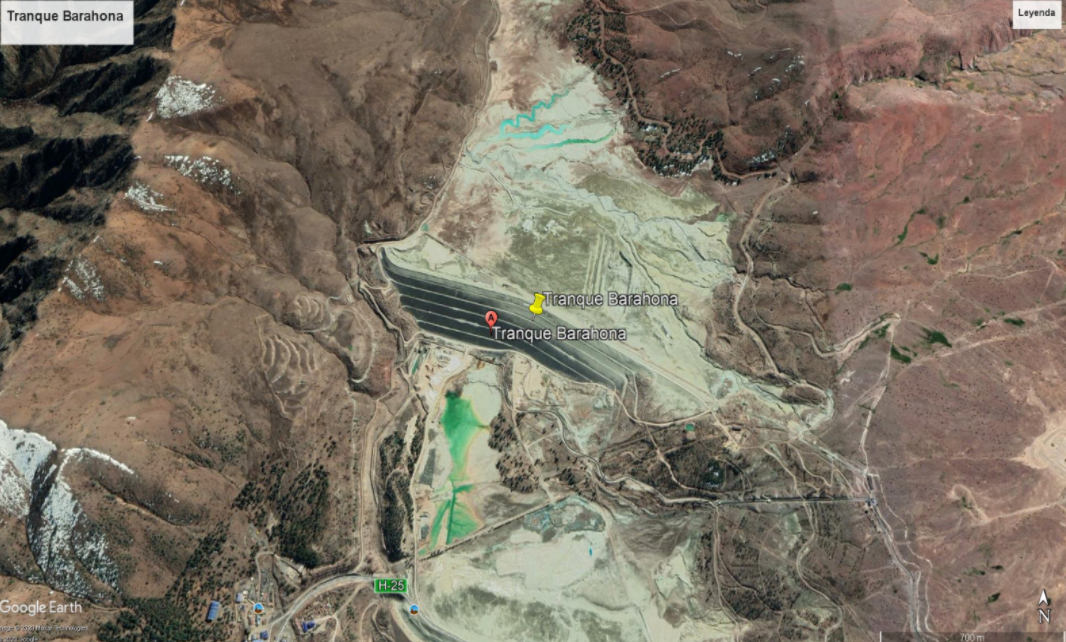 |
||||||||||||||||||||||||||||||||||||||||||
|---|---|---|---|---|---|---|---|---|---|---|---|---|---|---|---|---|---|---|---|---|---|---|---|---|---|---|---|---|---|---|---|---|---|---|---|---|---|---|---|---|---|---|---|
Candelaria
|
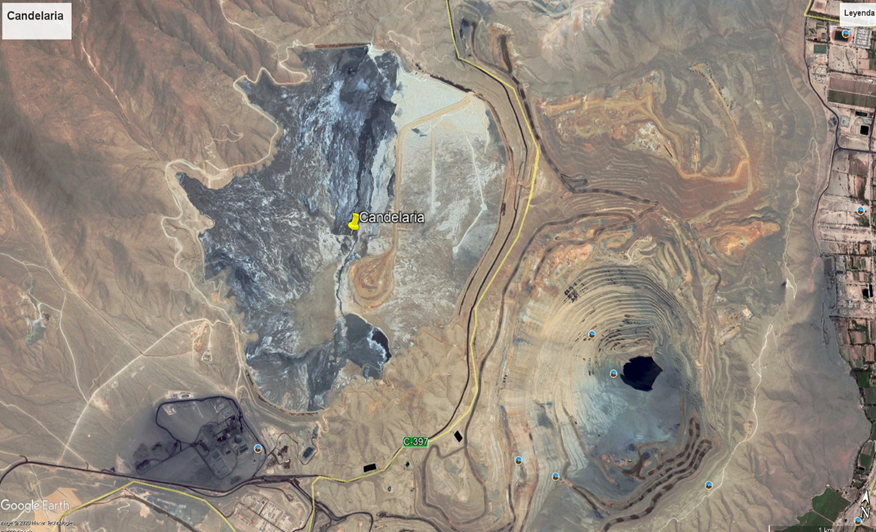 |
||||||||||||||||||||||||||||||||||||||||||||||||||||||||
|---|---|---|---|---|---|---|---|---|---|---|---|---|---|---|---|---|---|---|---|---|---|---|---|---|---|---|---|---|---|---|---|---|---|---|---|---|---|---|---|---|---|---|---|---|---|---|---|---|---|---|---|---|---|---|---|---|---|
El Indio
|
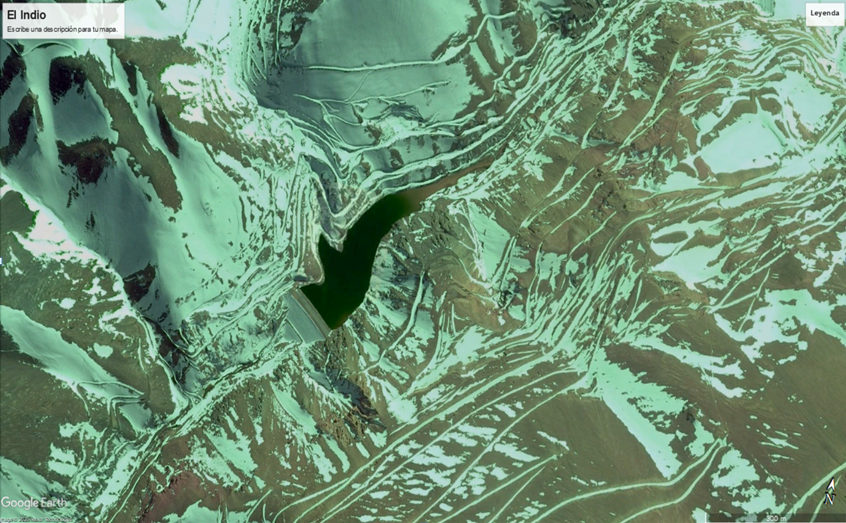 |
||||||||||||||||||||||||||||||||||||||||||||||||||||||||
|---|---|---|---|---|---|---|---|---|---|---|---|---|---|---|---|---|---|---|---|---|---|---|---|---|---|---|---|---|---|---|---|---|---|---|---|---|---|---|---|---|---|---|---|---|---|---|---|---|---|---|---|---|---|---|---|---|---|
Presas de Hormigón
|
Nombre Presa |
Año |
Río |
Región |
Fundación |
Altura Máxima (m) |
Longitud de Coronamiento (m) |
|---|---|---|---|---|---|---|
|
1911 |
Tránsito |
III |
15 |
50 |
||
|
1911 |
Loa |
III |
40 |
47 |
||
|
1912 |
Zapata |
V |
15 |
1120 |
||
|
1949 |
Marga Marga |
V |
21 |
180 |
||
|
1951 |
Arroyo Salado |
III |
34 |
22 |
||
|
1963 |
Laja |
VIII |
Lavas Volvanicas |
10 |
195 |
|
|
1968 |
Rapel |
VII |
R/S |
112 |
335 |
|
|
1975 |
Castro |
V |
R |
25 |
67 |
|
|
1976 |
Polcura |
VII |
R |
20 |
106 |
|
|
1980 |
Polcura |
VIII |
S |
26 |
167 |
|
|
1996 |
Biobío |
VIII |
R |
121 |
410 |
|
|
2004 |
Biobío |
VIII |
R |
155 |
370 |
Qué es Icold Chile
- Incrementar el desarrollo profesional en el planeamiento, proyecto, construcción, mantenimiento y operación de grandes presas mediante la recopilación de información y el estudio y divulgación de temas relacionados con la materia.
- Actuar como Comité Nacional afiliado a la Comisión Internacional de Grandes Presas (ICOLD), a la cual presta su colaboración cumpliendo con los Estatutos y Reglamentos de esa organización.
- Asesorar a los organismos públicos y privados cuando le fuere solicitado en cuestiones técnicas relacionadas con los fines de la Asociación.
ICOLD CHILE está conformado por un directorio compuesto por 12 miembros, siendo 3 de CODELCO, 3 de ENDESA, 1 del MOP, 3 representantes de empresas privadas y 2 representantes de personas naturales. De los cuales es nombrado un Presidente, 2 Vice-Presidentes y Tesorero. Además, se nombra a un Secretario, el cual puede no necesariamente tener el cargo de Director.
Qué es ICOLD-CIGB
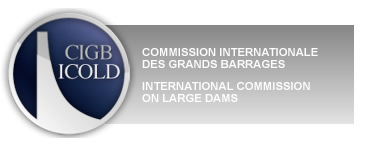 ICOLD es la sigla en inglés de “INTERNATIONAL COMMISSION ON LARGE DAMS” o CIGB en francés “COMMISSION INTERNATIONALE DES GRANDS BARRAGES” (http://www.icold-cigb.net/). Fue creada el 6 de julio de 1928 en París, Francia, como Comisión Internacional de Grandes Presas de la Conferencia de la Energía y así funcionó hasta 1967.
ICOLD es la sigla en inglés de “INTERNATIONAL COMMISSION ON LARGE DAMS” o CIGB en francés “COMMISSION INTERNATIONALE DES GRANDS BARRAGES” (http://www.icold-cigb.net/). Fue creada el 6 de julio de 1928 en París, Francia, como Comisión Internacional de Grandes Presas de la Conferencia de la Energía y así funcionó hasta 1967.
A partir de ese año se constituyó como una organización internacional independiente, la que celebra cada año una Reunión Ejecutiva con los representantes de los países miembros para discutir sobre temas técnicos, económicos y administrativos.
En la Reunión Ejecutiva que coincide con un Congreso que se realiza cada tres años, además del nombramiento de dos nuevos Vice-Presidentes, se elige a un nuevo Presidente. Los temas a tratarse en cada Congreso son establecidos con anterioridad durante el desarrollo de los Comités Ejecutivos a propuesta de los miembros, sobre aspectos de interés, definiéndose los temas por votación directa.
Actualmente cuenta con más de 90 comités nacionales miembros y cerca de 10.000 miembros individuales alrededor de todo el mundo.
ICOLD es una organización internacional, no gubernamental, que procura un foro para el intercambio de conocimientos y experiencia en ingeniería de presas. Esta Organización lleva la profesión para garantizar que las presas se construyan de manera segura, eficiente, económica y sin efectos perjudiciales para el medio ambiente.
Su objetivo original era fomentar los avances en la planificación, diseño, construcción, operación y mantenimiento de grandes presas y sus obras civiles asociadas, mediante la recopilación y difusión de información relevante, mediante el estudio de las cuestiones técnicas relacionadas.
Desde finales de los años sesenta, el foco fue puesto en temas de actualidad como la seguridad de las presas, el monitoreo del desempeño, re-análisis de presas mayores y vertederos, los efectos del envejecimiento y el impacto ambiental. Más recientemente, los nuevos temas incluyen los estudios de costos en las etapas de planificación y construcción, los ríos internacionales, aprovechamiento de la información para el público en general y su financiamiento.
Su actual Directorio lo conforman:
| Cargo | Nombre | País | Periodo |
|---|---|---|---|
| Presidente | M. Rogers | Estados Unidos | 2018-2021 |
| Secretario General | Michel De Vivo | Francia | 2006-Indef. |
| Vice-Presidente | A. Noorzad | Irán | 2018-2021 |
| Vice-Presidente | M. Abebe | Etiopía | 2018-2021 |
| Vice-Presidente | DK Sharma | India | 2019-2022 |
| Vice-Presidente | E. Cifres | España | 2019-2022 |
Todos los cargos directivos son elegidos por votación de todos los países miembros para una duración de 3 años no renovables, con excepción del Secretario General y el Tesorero.
Público general
Directorio de publicaciones Icold para público General
- Parámetros de Deformación y Corte de las Gravas de la Presa Puclaro / Galvez_Chile Descargar
- Listado de Boletines ICOLD Descargar
- Safety Performance of Dams in Chile Highly Seismic Environment Descargar
- Challenges in High Tailings Dams: A review of key factors for a correct performance evaluation under high confinement pressures. Descargar
